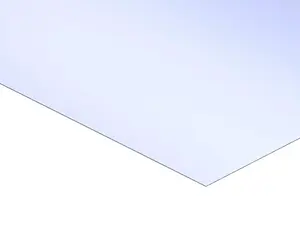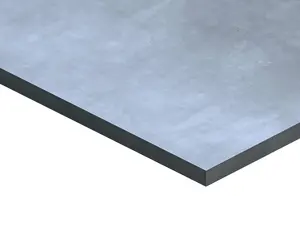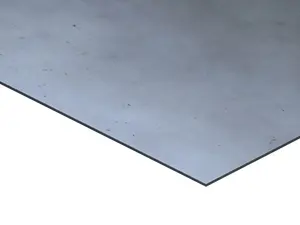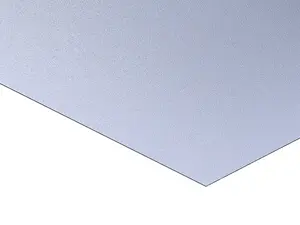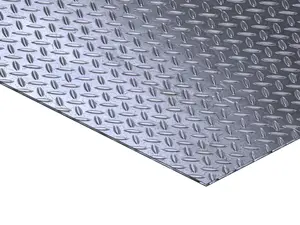Heavy structural plates (quarto)
241 variantsHot rolled sheets
158 variantsHot-deep galvanised sheets
17 variantsTear sheets
48 variantsDiscover a wide range of steel sheets designed for various applications. Our sheets are available in a variety of sizes and grades. they have been carefully selected and tested to meet customer expectations in terms of both quality and durability.
Characteristics of sheets
Steel sheets are the foundation of many industries, combining strength with flexibility. Thanks to modern production technologies, we can obtain sheets of various thicknesses and properties, ideally suited to specific requirements.
Hot-rolled thin sheets are produced at temperatures above the steel's recrystallization temperature, usually in the 900-1300 °C range. This rolling process gives them excellent formability and uniform structure. They are characterized by a uniform structure and smooth surface, which makes them easy to machine and weld.
Structural thick plates (quarto), unlike thin plates, are produced using special quarto rollers, so they achieve considerable thickness and exceptional strength. Their thickness usually starts at 3 mm, but can extend to tens of millimeters. Their exceptional strength makes them an ideal material for many structures.
Cold-rolled sheets, produced at temperatures below the recrystallization temperature of steel, provide greater dimensional accuracy and better surface quality of the final product compared to hot-rolled sheets. The thickness of these sheets varies, but thin steel sheet obtained by this method can be as thin as tens of micrometers. These sheets are characterized by higher strength.
Features and advantages of metal sheets
Features of metal sheets
Hot-rolled thin sheets:
- Manufactured at temperatures above the recrystallization temperature of steel.
- Typical thickness less than 3 mm.
- Uniform structure and smooth surface.
- Thin steel sheet with good formability.
Structural thick plates (quarto):
- Manufactured using special quarto rollers.
- Thickness typically greater than 3 mm.
- Exceptional strength and load resistance.
Cold-rolled sheets:
- Manufactured at temperatures below the recrystallization temperature of the steel.
- Dimensional precision and excellent surface quality.
- Thicknesses from tens of micrometers upwards.
Sheet advantages:
Hot-rolled thin sheets:
- Excellent weldability and ease of machining.
- Dimensional stability with large surface area.
- Cost-effective solution for many applications.
Structural thick plates (quarto):
- Long service life and corrosion resistance.
- Ideal for structures with high strength requirements.
- Possibility to produce 3 mm steel sheet of high quality.
Cold-rolled sheets:
- High precision and surface quality.
- Optimal mechanical properties for advanced applications.
- Higher strength with retained ductility.
Steel grades
We offer steel sheets in DC01 (1.0330), S235JR (1.0038), S235JR+N (1.0038), S355J2+N (1.0577) and S355MC (1.0976).
DC01 steel (1.0330)
Features:
- Low carbon content and alloying additives. It is a low-alloy steel, mainly used for cold forming.
Advantages:
- Excellent formability.
- Ability to produce thin sheet steel.
- Dimensional stability.
Disadvantages:
- Limited strength compared to steels with higher carbon content.
- Lack of resistance to atmospheric corrosion without proper surface treatment.
S235JR steel (1.0038)
Features:
- Low carbon structural steel with good mechanical properties.
Advantages:
- Good weldability.
- Easy to machine.
- Ability to produce 3 mm steel plate with high quality.
Disadvantages:
- Less corrosion resistant than stainless steel.
S235JR+N (1.0038) steel
Features:
- Standardized variant of S235JR (+N), which improves its mechanical properties.
Advantages:
- Enhanced weldability compared to S235JR.
- Better resistance to distortion during heat treatment.
- Excellent for producing steel plates of greater thickness.
Disadvantages:
- Like S235JR, it is less corrosion resistant compared to stainless steel.
S355J2+N steel (1.0577)
Features:
- High strength structural steel, additionally normalized (+N).
Advantages:
- High strength with good ductility.
- Excellent weldability.
- Ideal for applications where higher strength is required, such as in the production of large-size steel plates.
Disadvantages:
- Higher price compared to lower strength steels.
S355MC steel (1.0976)
Features:
- High strength structural steel from the micro-alloyed steel group.
Advantages:
- Very good cold formability.
- High strength.
- Optimum properties for advanced steel plate applications.
Disadvantages:
- Higher price compared to traditional structural steels.
Applications of steel sheets
Steel sheets are an integral component in many industries, offering a combination of strength, ductility and excellent processing properties. They are used in a wide range of applications: from construction, to the automotive industry, to the manufacture of household appliances. Their versatility makes them a key component in load-bearing structures, roofing, building facades, and the manufacture of machinery and equipment components.
- Hot-rolled thin sheets - are mainly used where good formability and uniform structure are required. Typical applications include automotive body components, structural profiles and machine parts. Thin sheet steel produced by this method is often used in the furniture industry, in the manufacture of equipment housings and in other structures requiring a smooth and aesthetically pleasing surface.
- Structural thick plates (quarto) - the use of these plates is concentrated in areas where exceptional strength and resistance to heavy loads are required. Typical applications are bridge structures, heavy-duty machinery components and in the shipbuilding industry. Steel sheets of 3 mm and thicker are also used in heavy construction, crane manufacturing or earth-moving machinery structures.
- Cold-rolled sheets - are valued for their dimensional precision and excellent surface quality. Applications include primarily the electrical engineering industry, in the production of precision components and in the automotive industry, where higher accuracy and better surface properties are required.
Tips for investors
Determine the purpose of the sheet metal:
- For components requiring a uniform structure and good formability, choose hot-rolled thin sheets.
- For structures requiring exceptional strength and load resistance, opt for structural thick plates (quarto).
- For structures requiring dimensional precision and excellent surface quality, choose cold-rolled sheets.
Check the technical specifications - make sure that the thickness, hardness and other properties of the sheet meet your requirements.
Watch out for corrosion - remember that most steel sheets without proper surface treatment are susceptible to corrosion. Consider buying galvanized sheets or protect them with appropriate anti-corrosion coatings.
Technical consultation - before making a purchase, consult with an engineer or materials specialist to ensure that the steel grade you choose will be suitable for your application.
Consider future needs - if you plan to make regular purchases, consider establishing a long-term relationship with a supplier, which can bring pricing and logistical advantages.
Sheet metal storage
Proper storage of sheet metal is key to maintaining its quality and functionality. Our recommendations:
- Horizontal storage - metal sheets, especially those with large dimensions, should be stored horizontally on properly designed racks or pallets to prevent bending or deformation.
- Separation from the ground - to protect against moisture from the ground, sheets should be raised with wooden or rubber pads.
- Protection from moisture - the warehouse should be dry and well ventilated. Avoid storing sheets in areas prone to condensation.
- Minimize contact - place separating materials (e.g., anti-corrosion papers) between individual sheets to prevent them from scratching and sticking to each other.
- Accessibility - organize space so that access to each batch of sheets is easy and does not require moving other materials.
- Chemical protection - avoid storing sheet metal near chemicals that can lead to corrosion, such as acids or brines.
Did you know
- The properties of steel sheets largely depend on their microstructure. Minor changes in the manufacturing process, such as the cooling rate or the addition of alloying elements, can drastically alter the steel's crystal structure, affecting its mechanical properties.
- To increase the corrosion resistance of steel sheets, they are often subjected to a galvanizing process. This technique involves coating the surface of the sheet with a thin layer of zinc, which acts as a protective barrier against corrosion.
- Modern technologies allow rolling steel sheets that are less than the thickness of a human hair. These ultra-thin sheets have applications in the electronics and precision industries.
- A thicker steel sheet is not always more durable. The mechanical properties of sheet metal can be modified so that thin sheets have properties comparable to their thicker counterparts, which is crucial in structures where weight and volume matter.
Sheet metal - why with us?
We always focus on high quality. Whether you choose a thin steel sheet or a 3 mm steel sheet, you can be sure that you will receive a product that will stand the test of time and meet your expectations.
No matter what kind of investment you're making, our range of steel sheets has been prepared to meet your expectations.
Check out our range and find the perfect sheet metal for you!
FAQ
How much does steel sheet weigh?
The weight of a steel sheet depends on a number of factors, such as the thickness, dimensions and density of the steel. For example, a steel sheet with a thickness of 1 mm, an area of 1 m2 and a density of about 7.85 g/cm3 will weigh about 7.85 kg.
To calculate the weight of a steel sheet of a different thickness, multiply the area by the thickness of the sheet and its density.
However, it is worth noting that different types of steel can have slightly different densities, and also the sheet metal manufacturing process can affect its final weight. It is always best to consult the manufacturer or supplier for accurate information.

